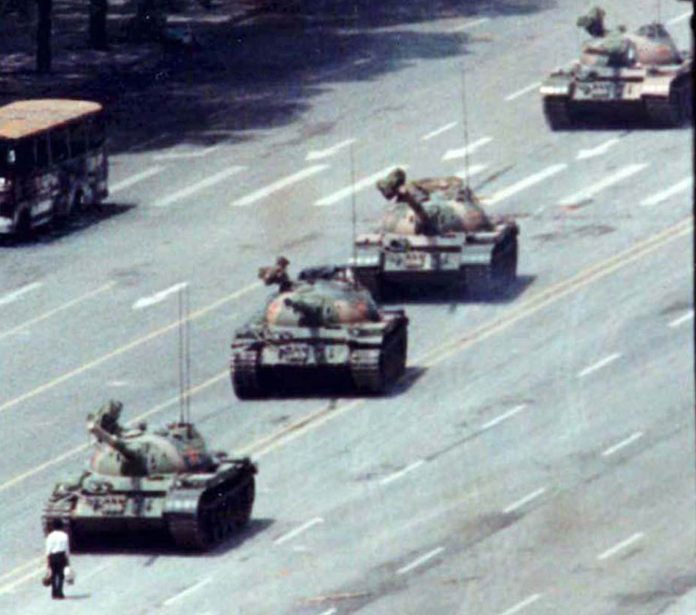High-strung crowds took to the streets in Shanghai early today while videos on social media showed protests in other Chinese cities. Many social media users have blamed the long anti-Covid lockdown for hindering rescue efforts, even as the massive fire in Urumqi, the capital of northwestern China’s Xinjiang region, on 24 November has fuelled anger.
The people are opposing the draconian zero-Covid policy of the communist government. Some people in a gathering in Shanghai lit candles and lay flowers for the victims of communist suppression. Others could be heard chanting slogans such as “Xi Jinping, step down” and “Communist Party, step down”. Some people carried blank white banners.
The Chinese people are frequently using blank white banners or flags in protests, but why?
Chinese protesters inspired by Hong Kong activists
Hong Kong protests against Beijing’s tough national security laws seem to have inspired this activism in mainland China where any direct criticism of the government or the president can result in severe punishment. Anti-government protests in June 2020 had led to an explosion of public art and graffiti, some of which called for freedom of the Chinese-ruled territory, as activists in Hong Kong demanded “liberation” of the financial centre from Chinese control.
Expectedly, Hong Kong’s government said the popular slogan “Liberate Hong Kong, the revolution of our times”, scribbled on walls and banners and a call for separatism or subversion were punishable crimes inviting long prison sentences under the new law.
Bridge Man emerges
In response, a 50-year-old campaigner held up a blank sheet of paper during a small lunchtime protest. He said that it was to expose what he saw as censorship. He said that everyone already knew the slogans by heart so there was no need to write them down (on banners and posters).
Leung said, “These slogans will always be in my heart and these words will always be on the white paper, which will never disappear.” Elsewhere in the city, walls that were once colourful canvases of political murals and graffiti have been covered in white paint or blank post-it notes.
Other protesters used art or design to hide “Liberate Hong Kong” slogans, changing characters, blurring letters or burying words in images.
Hundreds of people taking to the streets to demand President Xi step down was unimaginable until recent times. More open and intense dissent, following the recent dramatic protests at the Beijing bridge, which stunned many, seems imminent.
In another video that went viral, a man carrying a cardboard box and car tyres climbed onto a busy overpass in Beijing’s Haidian University district on a cloudy afternoon in October. He easily walks over to a construction worker wearing an orange work suit and a yellow hard hat. Then he unfurled two large white banners covered with red slogans. He sets the tyres on fire.
As plumes of black smoke swirled around him, he grabbed a loudspeaker and appealed, “Go on strike at school and work, oust the dictator and national traitor Xi Jinping! We want food, we want freedom, we want to vote.”
The man quickly pulled off one of the most significant visuals of anti-communism protest witnessed under Xi’s rule, marking a tumultuous start to the Chinese autocrat’s third term in power.
It has sparked one of the most widespread social media storms and censorship crackdowns witnessed in recent years, leaving a lasting legacy of Chinese discontent. It has piqued the interest of China’s censors that have scoured photos and footage and limited search results for a wide range of words, including common words such as “Beijing” and “bridge”.
Who was Tank Man?
Tank Man (also known as the Unknown Guard or the Unknown Rebel) was the nickname given to an unidentified Chinese man who emerged from Tiananmen Square in Beijing on 5 June 1989, a day after the Chinese government’s violent crackdown on the Tiananmen protests. The man was seen standing in front of a column of Type 59 tanks.
As the lead tank moved forward to pass the man, he repeatedly changed his position to obstruct the path of other tanks around him. The incident was filmed and shared with a worldwide viewership. Internationally, it is considered one of the most iconic images of all time. This image and its associated events are subject to censorship inside China.

The Tank Man became an enduring symbol of defiance in the face of violent authoritarianism. That image of blocking tanks was on the front pages of newspapers around the world. A television programme in China branded the tank man “the lone rogue” and used images of him to claim that soldiers of the Chinese army had “exercised utmost restraint” when confronting unarmed civilians.
It remains to be seen whether the ‘Bridge Man’ will have as great a historical significance as the “Tank Man”. But it’s certainly reigniting the bold imagery associated with the rare Chinese protests.



You must log in to post a comment.